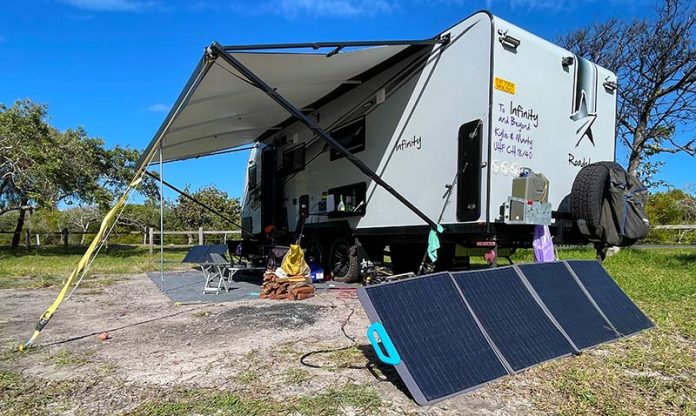
I wish I had a dollar for every post I’ve seen on caravan and camping Facebook groups where the member is having issues with their batteries going flat even though they have invested in the latest and greatest lithium batteries and solar systems. Many of them are so frustrated that they are ready to rip shreds off their supplier for selling them a dud system. I don’t blame owners for getting frustrated. Over the years I’ve had several different 12V electrical systems in caravans, campers and 4WDs and all of them have given me issues in one way or another.
After many hours of diagnosing my issues and getting advice from experts in the field, I’ve found most of the problems we experience with our 12V systems can be traced back to one or more of the following three factors:
- Environmental constraints;
- Poor electrical installation; and
- Unrealistic expectations.
In this article, we will look at these three issues in detail in the hope that we can shed some light (no pun intended) on the problems you might be having and how to remedy them.
ENVIRONMENTAL CONSTRAINTS
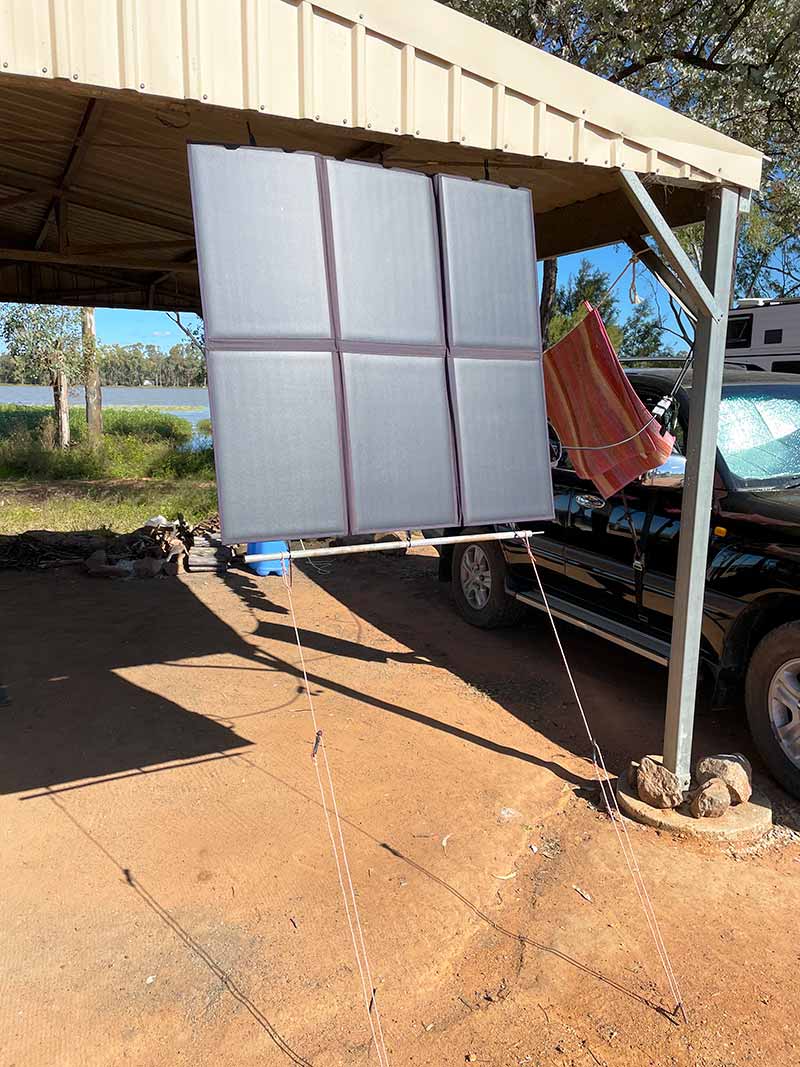
It’s no coincidence that the number of travellers with flat battery issues increases around this time of year. Winter creates many issues for off-grid campers simply because the conditions are just not conducive to producing the amount of solar power required to replace the energy we use running our appliances.
For a start, the sun sits much lower in the sky than it does during summer, including in the central north of the country where you might think the effect is not so great. This means the sun is at a very shallow angle to our rooftop solar panels, making them far less efficient. In fact, this issue alone can be responsible for reducing your solar panels’ output by as much as 70 per cent of their rated output!
So that 500W of solar panels on your caravan roof may only produce 150W in full sun and that will be for a very short time.
Speaking of time, the amount of daylight hours is significantly less than it is during summer, reducing the total watt-hours of solar energy we can produce each day. It also means we are using our batteries to power our appliances at night for longer. In other words, we will be taking much more electricity out of our batteries than we will be putting in. This shortfall can compound very quickly if you’re not keeping an eye on your caravan batteries’ state of charge (SOC).
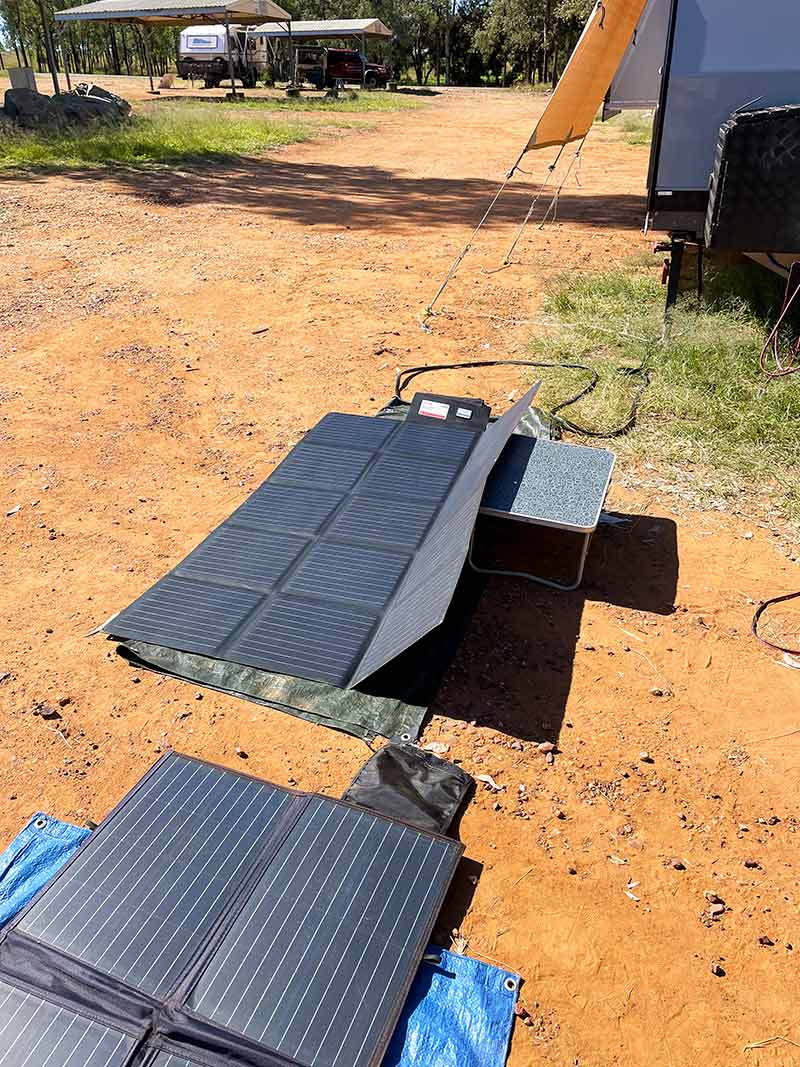
The solution? Even having just one external solar panel that you can place at the right angle to the sun can be enough to make a huge difference. Many new caravans come with an Anderson provision for connecting an external solar panel. If yours doesn’t, you can wire one in parallel with your rooftop panels or you may be able to use the Anderson connection on your drawbar to connect an external solar panel.
If the conditions are really bad, you may need to resort to using a generator.
POOR ELECTRICAL INSTALLATION
It’s incredible how many times I read of owners who are running high-power appliances off an inverter and their system shuts down, indicating flat caravan batteries, yet their battery monitor shows them to be at 100 per cent SOC. It’s perplexing, especially for owners who have limited knowledge of their systems. No wonder when you see that this issue is often the result of a poor electrical installation by the manufacturer.
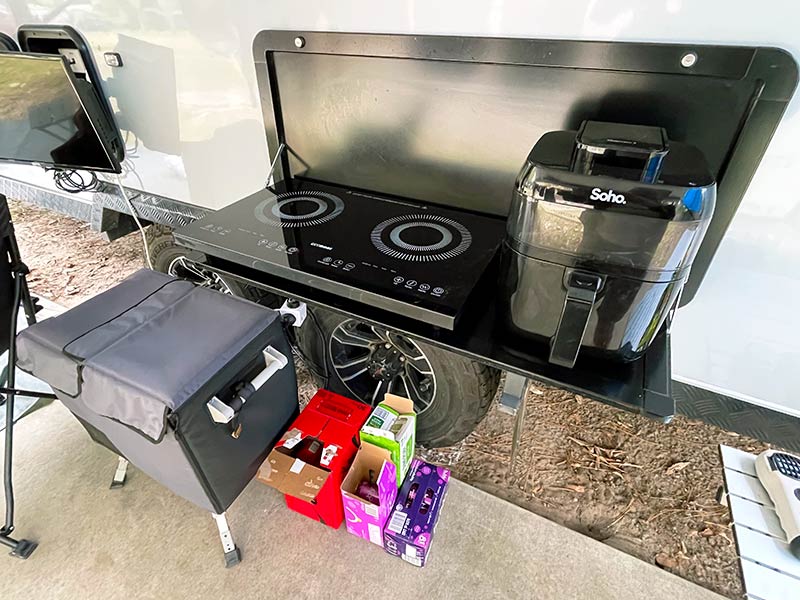
The vast majority of high-end electrical installations will have a device called a shunt. This tricky device measures the amount of amps going in and out of the batteries. Connecting the shunt to a battery is very simple. One end connects to the negative terminal on the battery string and the other side connects to all the negative wires of all the caravan’s devices and chargers. This seemingly simple installation is often botched.
For some reason, manufacturers connect the inverter, as well as other devices, to the battery’s negative terminal, not the shunt. The result is the battery management system can’t ‘see’ the power drawn from the inverter, which can be extremely high. This will drain the caravan batteries very quickly and the owner will be none the wiser.
Fixing this can be very easy if you have some knowledge of 12V electrical wiring. You just identify the shunt and ensure any negative connections are connected to it and not the battery’s negative terminal. This is assuming the shunt can handle the additional current draw of the inverter. If you’re not sure, have your electrical system checked out by a qualified caravan electrical technician.
UNREALISTIC EXPECTATIONS
At the end of the day, many owners just have unrealistic expectations of their electrical system’s capabilities. Just because you’ve upgraded to the latest lithium technology doesn’t mean you suddenly have an endless amount of power available. Lithium batteries drain at the same rate as lead acid batteries for any given load.
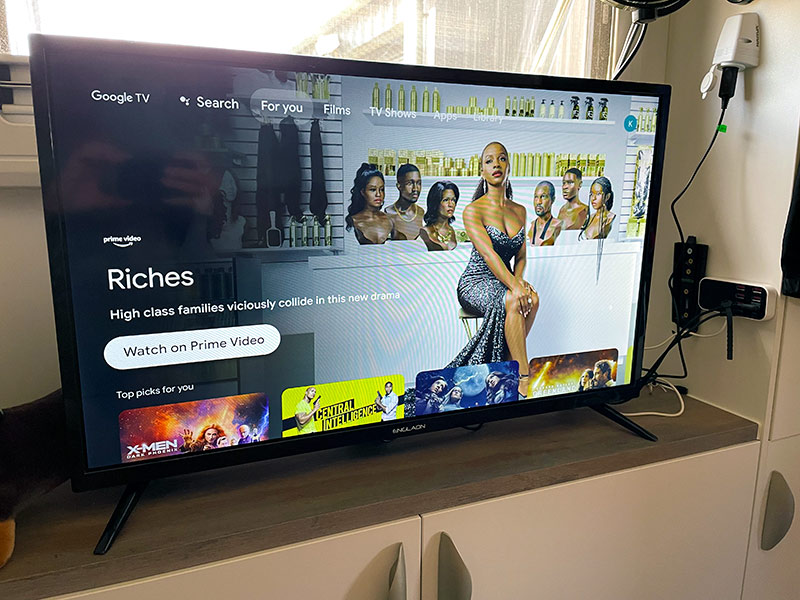
I also believe many owners need to pay more attention to how much power they actually use. Camping is not what it was 20 years ago. We have to have all the modern conveniences with us. Mobile phones, smart TVs, internet, satellite communications, and even coffee machines are standard equipment for many travellers these days. That includes me, I might add!
All these appliances need power to run and while you may only use some of them for short periods of time, all that power usage adds up.
Owners need to have a better understanding of their system’s capabilities and its limitations. I advise new caravan owners to go to a caravan park and do some trial runs without plugging into the power to see how their system performs under different conditions and using various appliances. That way you can run your batteries flat and not be stuck out in the middle of nowhere with no means to recharge.
It also helps to keep an eye on your caravan batteries’ SOC during the day. You don’t have to sit there obsessing over the battery monitor but don’t completely ignore it either.
CARAVAN BATTERIES: FINAL WORD OF ADVICE
I am not an electrician. Much of what I have learned over the years, I have done so through trial and error. I’ve also been careful who I listen to when it comes to seeking the assistance of others.
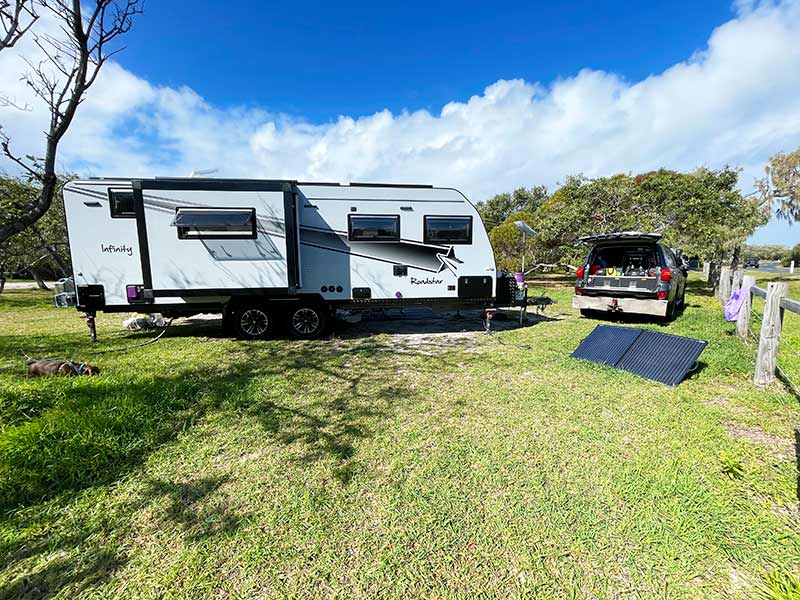
In the world of social media, everyone thinks they are an expert. Telling the difference between good and bad advice is very difficult. However, if you take the time to learn the basics of 12V electricity, that knowledge can go a long way towards understanding what’s happening to the battery systems in your chosen RV.
VOLTAGE AND STATE OF CHARGE
Measuring the SOC using battery voltage is a bad idea.
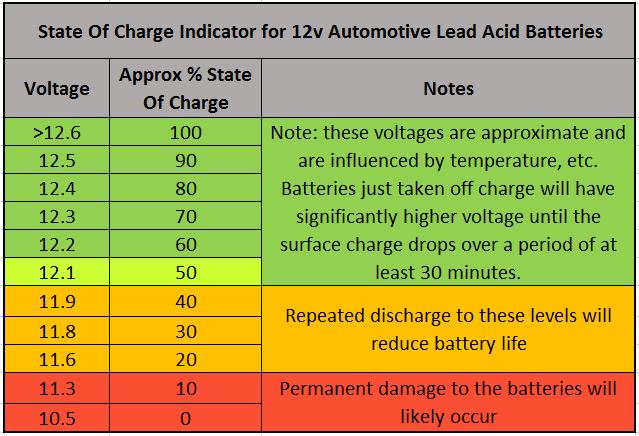
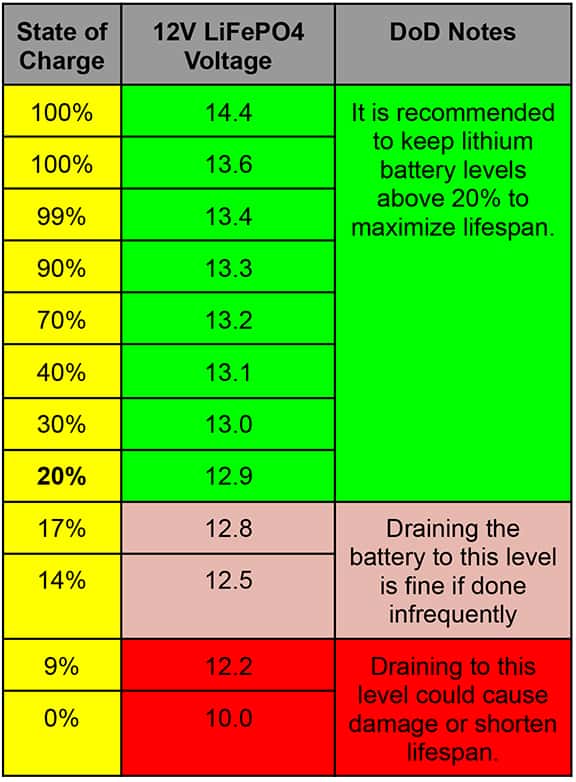 You’ve probably seen a chart similar to the ones above showing the approximate SOC of a battery depending on the voltage measured across the terminals. While this is a reasonable indication of the SOC of a lead acid battery, it’s really only a guide and, for lithium batteries, it is almost completely useless.
You’ve probably seen a chart similar to the ones above showing the approximate SOC of a battery depending on the voltage measured across the terminals. While this is a reasonable indication of the SOC of a lead acid battery, it’s really only a guide and, for lithium batteries, it is almost completely useless.
The problem is, there are several things that can affect the resting voltage of a lead acid battery. These include ambient temperature, time since last fully charged, any load on the battery, and the general condition/age of the battery. Any one or a combination of these can throw the true SOC out the window.
Another problem can occur when a remote voltmeter is being used to measure the voltage. Depending on the length of wiring between the battery and the display, these can be affected by voltage drop along the wiring, reducing the displayed voltage by 1-2V. This may not sound like much but if you look at the chart again, 1V makes a big difference to the assumed SOC.
As for lithium batteries, they tend to give a consistent voltage right up until the last 10 per cent of their SOC. This means you can be lulled into a false sense of security, thinking your battery has a lot of charge left, only to find it goes completely flat in a very short span of time.
If you intend to do a lot of free-camping and need to rely on charged caravan batteries, you should seriously consider fitting a shunt if your system doesn’t already have one.
This Victron SmartShunt can be installed into just about any existing battery system in minutes. It uses Bluetooth to transmit the reading to your smart device using the VictronConnect app so you don’t have to wire in a remote display.
Once set-up and synchronised to your battery, it will accurately measure charging amps in and usage apps out in real time. You can see how many amp hours you’ve consumed as well as an approximate time remaining in your battery. You can set limits of discharge to help prevent over-discharging. The shunt can handle up to 500A, well within the requirements of most caravanners.
BATTERY CHARGER INDICATION
Using a charger to approximate the SOC of your caravan batteries.
If you believe you have an issue with the indicated SOC of your caravan batteries, there is an easy way to get a rough idea using your 240V battery charger or your solar controller.
The vast majority of chargers fitted to caravans will be multi-stage chargers, usually with three or five stages. In basic terms, each stage of the charge cycle has different voltage and amps output designed to safely recharge the caravan batteries. The stages we are interested in are Bulk, Absorption and Float.
If you turn on your battery charger, or if the sun comes out to initiate charging on your solar controller, it will be in one of these modes. Bulk indicates the battery’s SOC is below about 80-90 per cent. Absorption indicates the battery is over 90 per cent and is nearing full charge. Float means the battery is fully charged.
If your battery charger does not start to charge the batteries at all, it could be an indication that your battery is completely flat.





